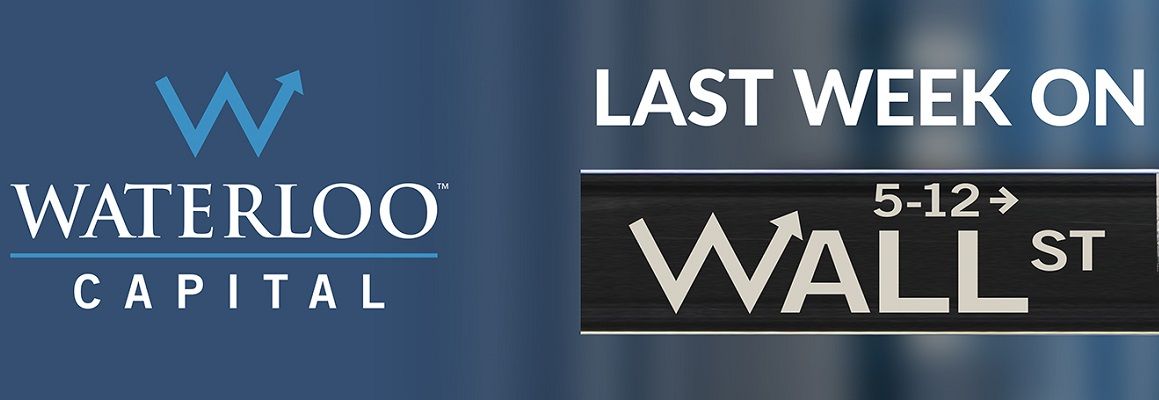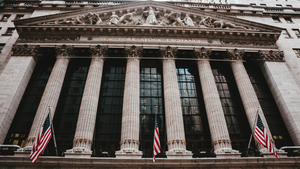S&P 500: -1.69% DOW: -2.15% NASDAQ: -1.61% 10-YR: 1.34%

Last Week on WallStreet - September 11
What Happened?
Overall indexes fell again yesterday, capping off the longest losing streak since June. Stocks remain near all-time highs but have turned volatile after climbing much of the summer. Every sector was in the red, but the clear underperformers were Real Estate (-3.9%), Healthcare (-2.7%), and Industrials (-2.5%).
- Jop openings rise again
- Fed beige book
- ECB remains dovish
- Producer price index
- Interesting articles from the Waterloo Watercooler

Jeff Cox - CNBC & Bloomberg
Job Openings Soar as Companies Struggle to Fill Positions
Jop openings, which are reported on a one-month lag, rose to 10.9 million from 10.18 million in June. That number swamped the 8.7 million level of those out of work and looking for jobs in July. From an industry standpoint, the rate jumped to 10.7% from 10.2% in the critical leisure and hospitality field, which has suffered the most during the Covid-19 pandemic. The hires rate actually dipped for the month, to 4.5% from 4.7%, while the quits rate, seen as a barometer of worker confidence, was unchanged at 2.7%.
The key takeaway is that after the economy shed millions of workers during the pandemic, the rapid snapback in activity is continuing to leave businesses short-staffed. Even with incentives to attract applicants, the pool of available workers remains constrained by pandemic-related factors. The Fed will continue to watch this labor market recovery as they contemplate tapering before year end.

Jeff Cox - CNBC
Businesses Are Feeling Stronger Inflation and Paying Higher Wages
In its periodic “Beige Book”, the central bank reported that growth overall had “downshifted slightly to a moderate pace” amid rising public health concerns during the July through August period that the report covers. “The deceleration in economic activity was largely attributable to a pullback in dining out, travel, and tourism in most Districts, reflecting safety concerns due to the rise of the Delta variant. The report noted that inflation is “steady at an elevated pace,” and said price pressures at the current supply level will likely find their way to store shelves. Business contacts cited “extensive labor shortages” despite “strong” wage growth particularly among lower earners.
The key takeaway is the release comes as the Fed is debating whether to withdraw some of its extreme policy accommodation. Specifically, they are considering tapering monthly bond purchases, probably before the end of the year. On the same day of the release, NY Fed President Williams thought it would be appropriate for the Fed to start tapering this year but will be watching the labor market closely for more clues on the economic outlook.

Tom Fairless - WSJ
ECB Sticks With Easy Money Policies
The European Central Bank announced they will trim emergency bond purchases over the coming quarter. While the ECB said it would slightly scale back its massive bond-buying program, Lagarde emphasized that the decision didn’t constitute a plan to reverse its easy-money policies. Analysts said the ECB would likely slow its purchases to around €60B-€70B of eurozone debt a month through the end of the year, down from around €80B at present—still enough to soak up eurozone governments’ expected bond issuance for the rest of the year as they splurge on support for businesses and workers.
The key takeaway is this was not a hawkish meeting as Lagarde made clear the ECB wasn't keen to close the money taps just yet, especially as the Delta variant threatens the recovery. This is the same dilemma the Fed is facing. The ECB also maintained a longstanding pledge to ramp stimulus back up if markets turn and financing conditions require it.

Greg Robb - MarketWatch
US Core Producer Prices Rise at Slower Pace in August
The US producer price index rose 0.7% in August, down from the 1% jump in July. The core producer price index, which excludes volatile food and energy prices, rose 0.3% in August, down from a 0.9% gain in the prior month. Overall producer prices are up 8.3% in August from a year earlier though, up from 7.8% in the prior month. That’s the largest gain since the data was first collected in November 2010.
The key takeaway is producers are still struggling with shortages and bottlenecks in the wake of the pandemic. These factors could continue to put upward pressure on wholesale prices. However, the shift in spending from goods to services we've seen lately should relieve some of the stress on companies going forward.
From the Waterloo Watercooler
In his most forceful pandemic actions and words, President Joe Biden on Thursday ordered sweeping new federal vaccine requirements for as many as 100 million Americans.
Facebook, in partnership with Ray-Ban, launched its first smart glasses on Thursday in a step toward its aim of offering true augmented-reality spectacles.
Coinbase has received notice of a possible enforcement action from the SEC related to its interest-earning product called Coinbase Lend.
El Salvador’s 40-year-old president Nayib Bukele got congress to green-light his plan to make the country the first to use Bitcoin as legal tender.
A financial disclosure form from Dallas Fed President Kaplan raised eyebrows this week by revealing a number of million-dollar trades in individual stocks. Now, Fed presidents Kaplan & Rosengren will sell all of their individual stock holdings to address ethics concerns.
A Los Angeles megamansion, known as "The One," once expected to list for $500 million has gone into receivership after the owner defaulted on more than $165 million in loans and debt.
